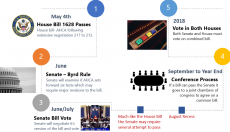5 ACA MISCONCEPTIONS THAT COULD GET YOU INTO TROUBLE

As our ACA filing season ends for 2018, I thought it would be helpful to share some of the latest misconceptions we have seen employers make concerning employer ACA requirements. The legislation can be murky, and the regulatory environment adds to this uncertainty. This article will provide some clarity on the employer requirements which are rooted in the IRS Shared Responsibility Requirements and definition of Applicable Large Employer(ALE). Below are some of the top areas where employers believe they do not have an obligation to file when they do:
- Under 50 employees but self-funded – With the expansion of small group level funded clients in 2018 also generated a growth in B filings. All self-funded clients under 50 lives must file the 1094/1095-B form. We noticed that many of these clients came in towards the end of the year when they realized this was a requirement.
- My insurance company issued the form – Every year we run into employers and advisers that believe the forms generated by the insurance carrier satisfy their ACA requirement. The 1095 B form for a fully insured client issued by the carrier does not satisfy the employer requirement. The employer must still generate the 1094/5 C forms and filing to the IRS.
- I’m under 50 full time employees – While part time employees (averaging under 30 hours a week) do not receive a form they are counted towards the total employee count when calculating an Applicable Large Employer. So, for example using simple math, an employer with 25 full time employees and 50 half time employees for the previous year = a 50 employee ALE and will need to file.
- Common ownership but separate operations – We have seen a few employers who use a separate HR/payroll application from their parent company and are below the 50-employee threshold. After further exploration we discovered they are more than 80% wholly owned by an aggregated company that has over 50 employees when combining all divisions. This qualifies them as an ALE based on the combined counts.
- The repeal of the individual mandate – This repeal signed by executive order will take effect for the tax year 2019 and means that individuals will not be assessed any penalties for not taking health insurance coverage. Despite the elimination of the penalty, even individual reporting is required on federal taxes. The main concern driving the employer filing requirements, the employer mandate remains. This means that filing requirements for both B and C filings and the associated penalties continue to be enforced for the foreseeable future.
EmployeeTech is a leading solutions provider for ACA reporting, serving thousands of customers since the the first year of filing. Our solutions offer affordable and reliable ACA Reporting including legislative expertise, coding, forms distribution and IRS filing and corrections for clients nationwide.

